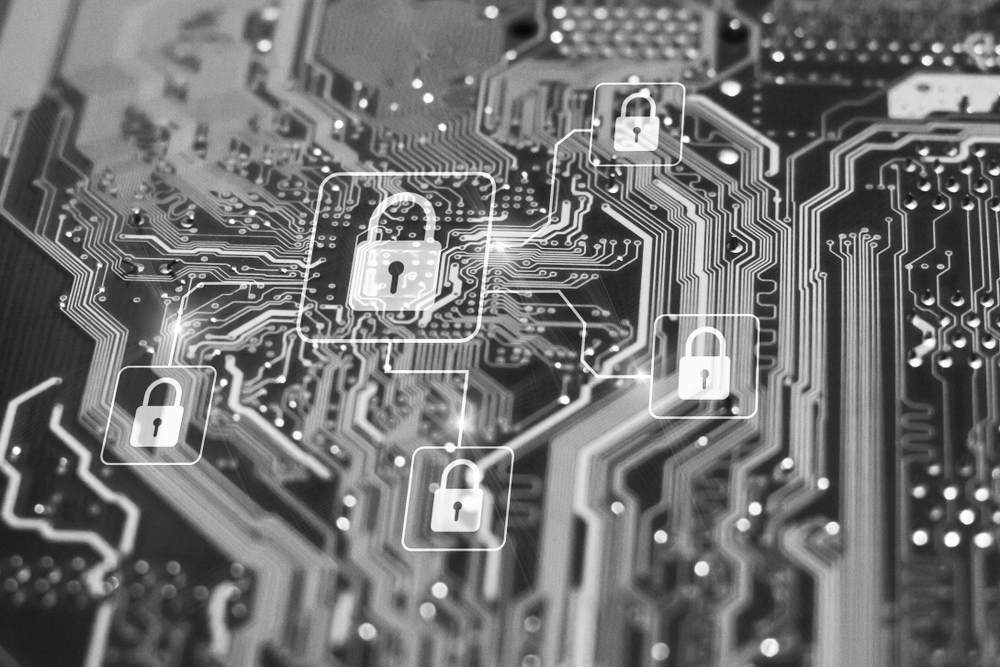Top 10 Cyber Security Threats for Businesses in 2024
April 24, 2024
Share this article:
Written by: ConsultNet

Cybersecurity is an ever-present issue for businesses of all types, all sizes and in every sector. Being vigilant about the types of threats, their potential impacts on your business and how to protect your company are core components of your IT strategy.
The challenge is knowing where to turn when the cyberthreats are constantly evolving. Hackers are always developing new, more sophisticated ways to infiltrate networks, exploit vulnerabilities and find new attack vectors. That’s why it’s important that your company has a proven partner that will protect your technology, data and employees.
What are the Top 10 Cybersecurity Threats for Businesses?
Attacks can come in many forms, but can affect any aspect of your technology. Emails and text messages can expose systems. Malware embedded in attachments or websites can destroy data and restrict access to your own technology.
Here is a closer look at the top 10 cybersecurity threats your business faces.
1. Phishing Attacks
Phishing uses email, SMS (texting), telephone, social media or social engineering techniques to compel a victim to share critical information, often passwords or account numbers. Phishing can also be used to get someone to download a file that installs viruses on a phone or computer.
Email Phishing
Email phishing is the most common type of phishing attacks. An email, often coming from an address that appears to be legitimate, asking the reader to download an important file, share account information or visit a website. These actions activate the malware and can infect systems either immediately or later.
2. Ransomware & Malware
Ransomware attacks occur when a hacker encrypts a victim’s data, cutting the users out from any functionality or access to systems. The attackers offer a decryption key in return for a ransom payment, often in the form of cryptocurrency.
Ransomware is often deployed via phishing attacks that deploy malware but can also be launched from an unpatched vulnerability or a misconfigured hardware piece.

Malware can take on many forms, including bots, keyloggers, spyware, trojans, viruses and worms. Each has its own traits and attack vectors. Spyware, for example, infects a device and collects information about web activity. A trojan appears to be legitimate software but ultimately infiltrates and steals data.
3. Denial-of-Service (DoS)
DoS attacks is a coordinated attack that floods a web domain with hundreds or thousands of requests. The sheer volume of activity can cause the website to slow down or cease functioning.
A DoS attack prevents users, whether employees or customers, from accessing back functions, including email, transactions or resources because the website cannot handle the volume of simultaneous inquiries.
A DoS is from one source. A Distributed Denial-of-Service (DDoS) attack is more organized, involving more attacks from multiple systems, making them even more difficult to combat.
4. Internet of Things (IoT) Vulnerabilities
Today, more devices than ever are connected to each other and systems with sensors and transmitters that collet and share data. As more devices, from cars to doorbells to refrigerators, are connected, the risk of these devises being used in a cyberattack has increased.
A hacker can gain control of a device and change the commands and affect how the3 device operates. In addition, hackers can use the compromised device to steal data or connect it to other devices to organize a DoS attack.
5. Zero-Day Exploits
The day a new vulnerability is discovered in is considered” zero day,” because the vendor has had zero days to address the problems with software, an app or hardware. That makes it an ideal time for hackers to take advantage of the vulnerability.
A zero-day vulnerability is one where the attackers discover the vulnerability before the developers do. Zero-day exploits are the ways in which hackers can attack the technology before a remedy is created and deployed.
6. Data Breaches
Data breaches are a far too common result of a cyberattack. Data stored either in on-premises servers or in the cloud can be stolen and sold to bad actors.
A data breach can be extremely damaging to companies, as customers and employees will not be happy if personal or financial information is disclosed. Businesses that experience a data breach face extensive costs for identity monitoring, notification, legal fees and mitigating reputational loss.
7. Man-in-the-Middle (MitM) Attacks
A man-in-the-middle attack occurs when an attacker intercepts messages between two parties and relays them to a third party. It’s a kind of eavesdropping that allows the attackers to grab and manipulate sensitive information, including login credentials, credit card information or account details.
8. Cloud Security Threats
Cloud technology has allowed for companies to store data, apps and operating systems offsite under what are supposed to be highly secure physical and virtual spaces. However, there are security risks to cloud deployments.
Cloud breaches have led to the development of “zero trust” cloud architecture, which requires verification of credentials for every login, every interaction and ever use of data. It eliminates granting long-term access to devices that have been verified once.
9. Third-Party Threats

Third-party contractors are common in technology engagements. Often, a breach or other cyberattack happens because a third-party has exposed the system or network to hackers. Be sure that your third-party partners are compliant with your security protocols and are not exploiting your technology.
10. Network-Based Attacks
Network-based attacks are designed to compromise network security. Man-in-the-middle and denial-of-service attacks are two such attacks. Others include sniffing, where an attacker is in a data stream and reads, monitors or captures whole data packets.
DNS Spoofing
Spoofing occurs when a computer redirects users from a legitimate website to one that is fraudulent, malicious or may resemble the intended destination. Once on a fraudulent site, a user may be directed to log in, giving the hackers access to login credentials to the actual website.
Keep Your Business Secure with ConsultNet's Cyber Protection
Keeping your business safe from cyber attacks can seem daunting. However, with ConsultNet’s managed cybersecurity services, you’ll have a layered approach, including network monitoring, malware and antivirus software, automated software updates, device protection and employee education.
ConsultNet’s digital risk protection approach is a multi-stage process to map, monitor and manage your technology stack.
To learn more about ConsultNet cybersecurity solutions, contact us today.












